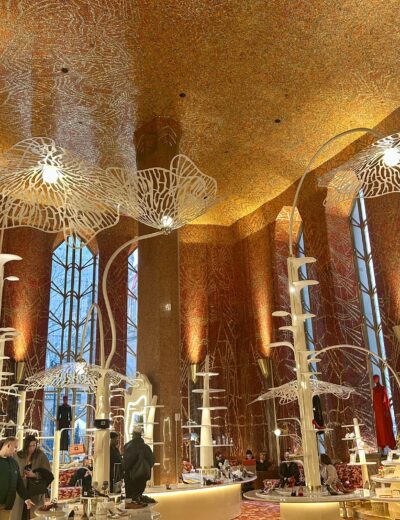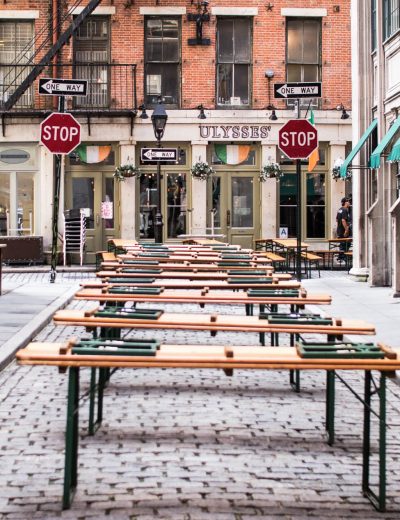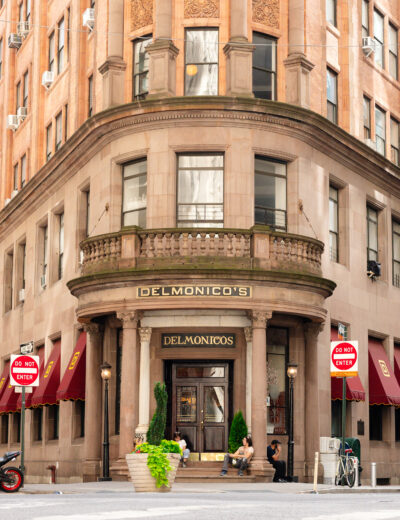Meet the Famous Buttonwood Tree of Wall Street
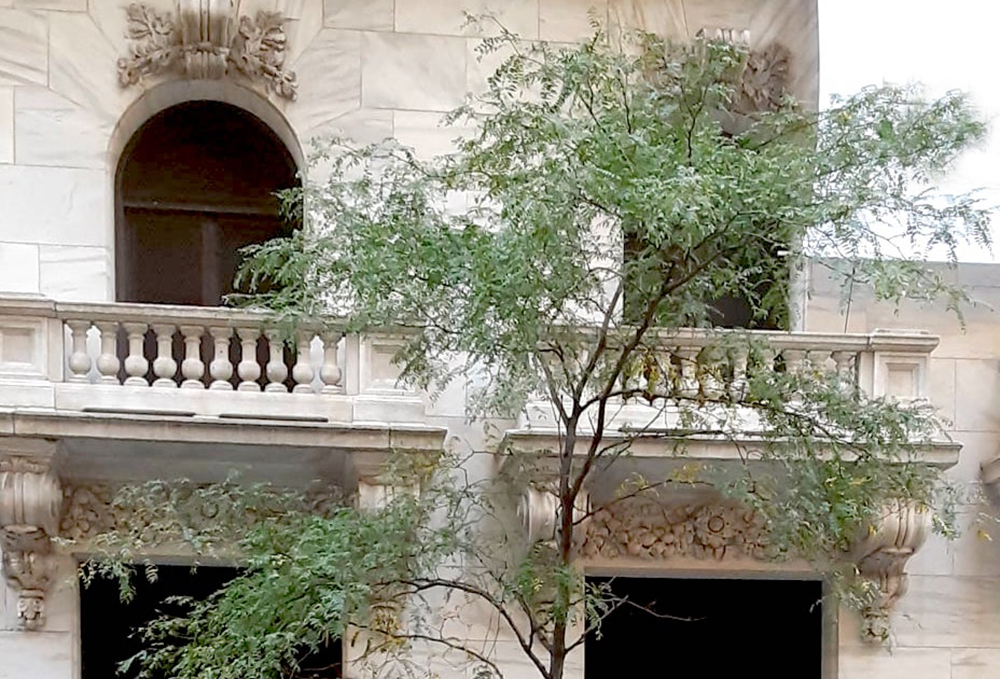
Many visitors to Wall Street hardly notice the solitary buttonwood tree standing outside the New York Stock Exchange. As it happens, the New York Stock Exchange is one of the only buildings in the Financial District that hosts a tree in front of it — but it’s not just any tree. This tree symbolizes one of the most significant events in financial history.
So why is there a tree in front of the New York Stock Exchange and nowhere else? And what can you see today when you visit? As your local NYC tour guide (and former equity and bond trader who worked in investment banking on Wall Street for many years), I’m here to help. Here’s everything you need to know about New York City’s famous buttonwood tree.
History of NYC’s buttonwood tree
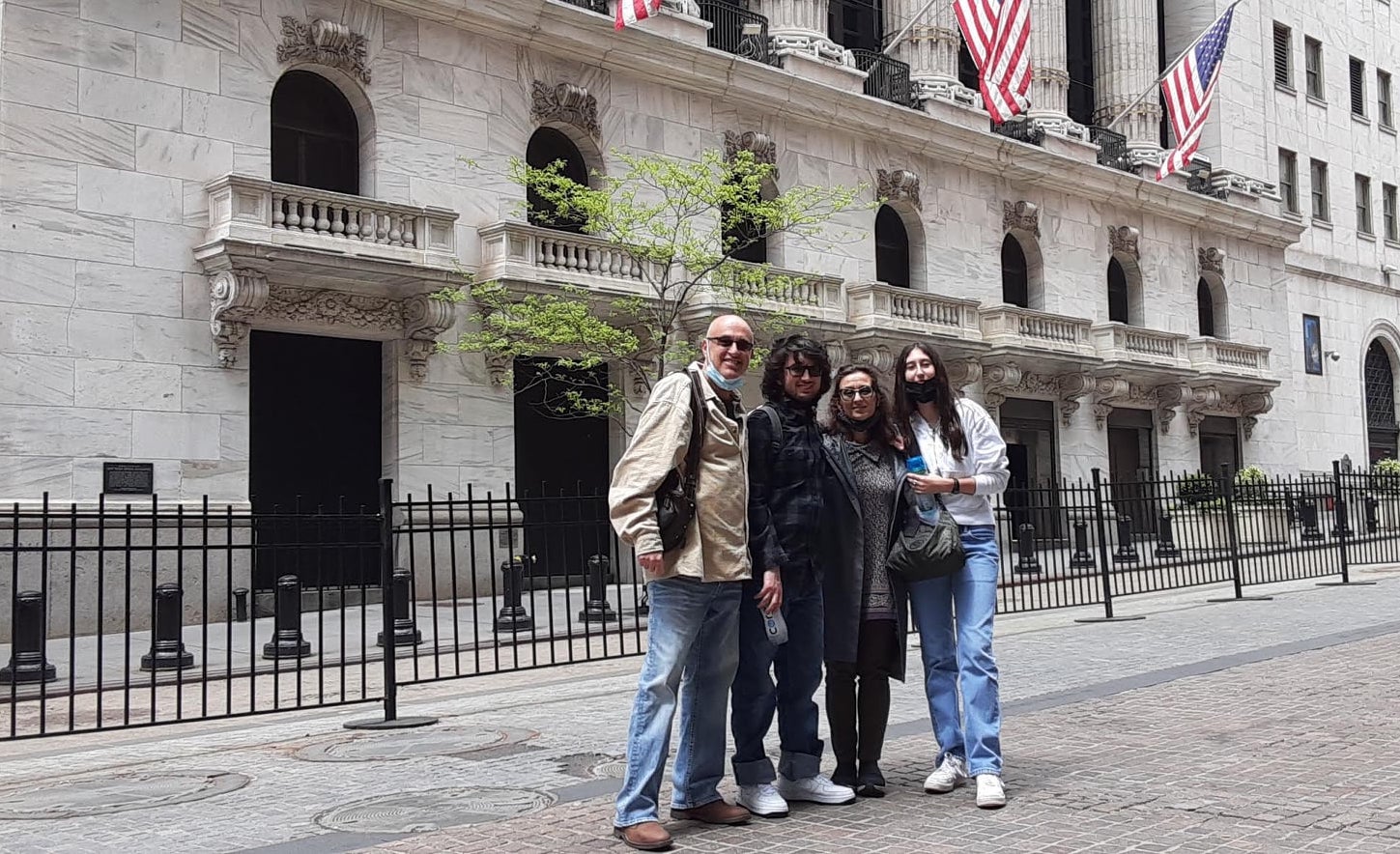
Only 16 years after the founding of America, one of the country’s most important institutions was born: the New York Stock Exchange.
The buttonwood tree in front of the New York Stock Exchange symbolises the 1792 Buttonwood Agreement. In that agreement, 24 traders, stockbrokers and merchants agreed to certain principles, rules and regulations to make trading easier. With the Buttonwood agreement, the New York Stock Exchange — and some would suggest the modern financial system — was born.
The Buttonwood Agreement set in place a series of guiding principles that were based on existing European trading systems at the time. The agreement aimed to bridge the trust gap between brokers and merchants who agreed to only trade with each other and charge a set commission rate for their services.
Setting the scene
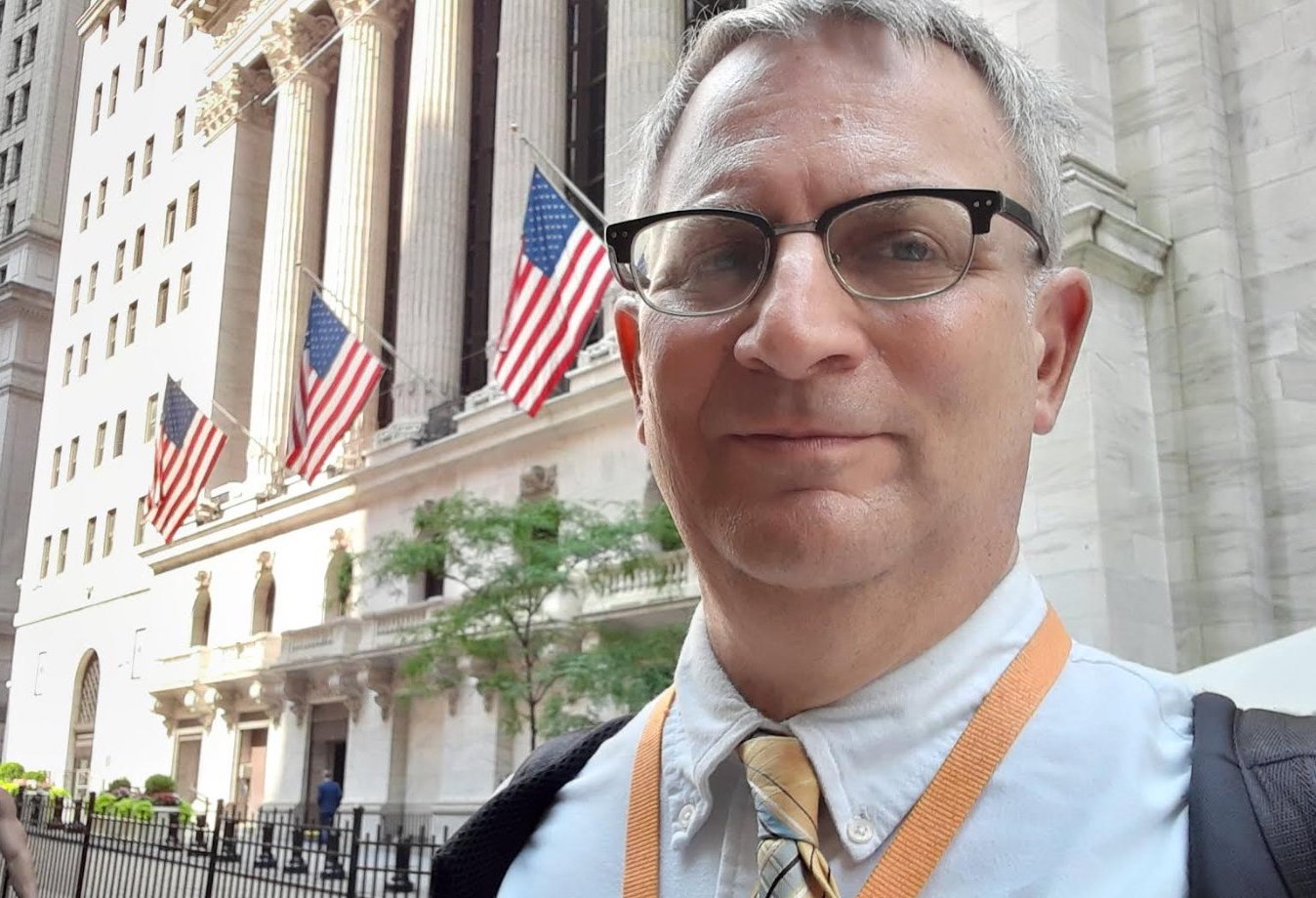
Wall Street tour guide James Foytlin in front of the buttonwood tree on Wall Street
In response to the financial Panic of 1792 (more on this below), two dozen merchants and brokers, considered the crème de la crème of the New York business and financial community, gathered on May 17, 1792, near what is now 68 Wall Street. They met under the shade of a beautiful buttonwood (AKA a sycamore) tree. And they were there to sign a written agreement they had been discussing since the beginning of March.
- Who: 24 New York merchants and brokers
- What: Signing the Buttonwood Agreement
- When: May 17, 1792
- Where: Under a buttonwood tree on Wall Street
Simply stated, they formed a club, agreeing to trade directly and exclusively with each other under a series of common rules and regulations.
The Panic of 1792 that started it all
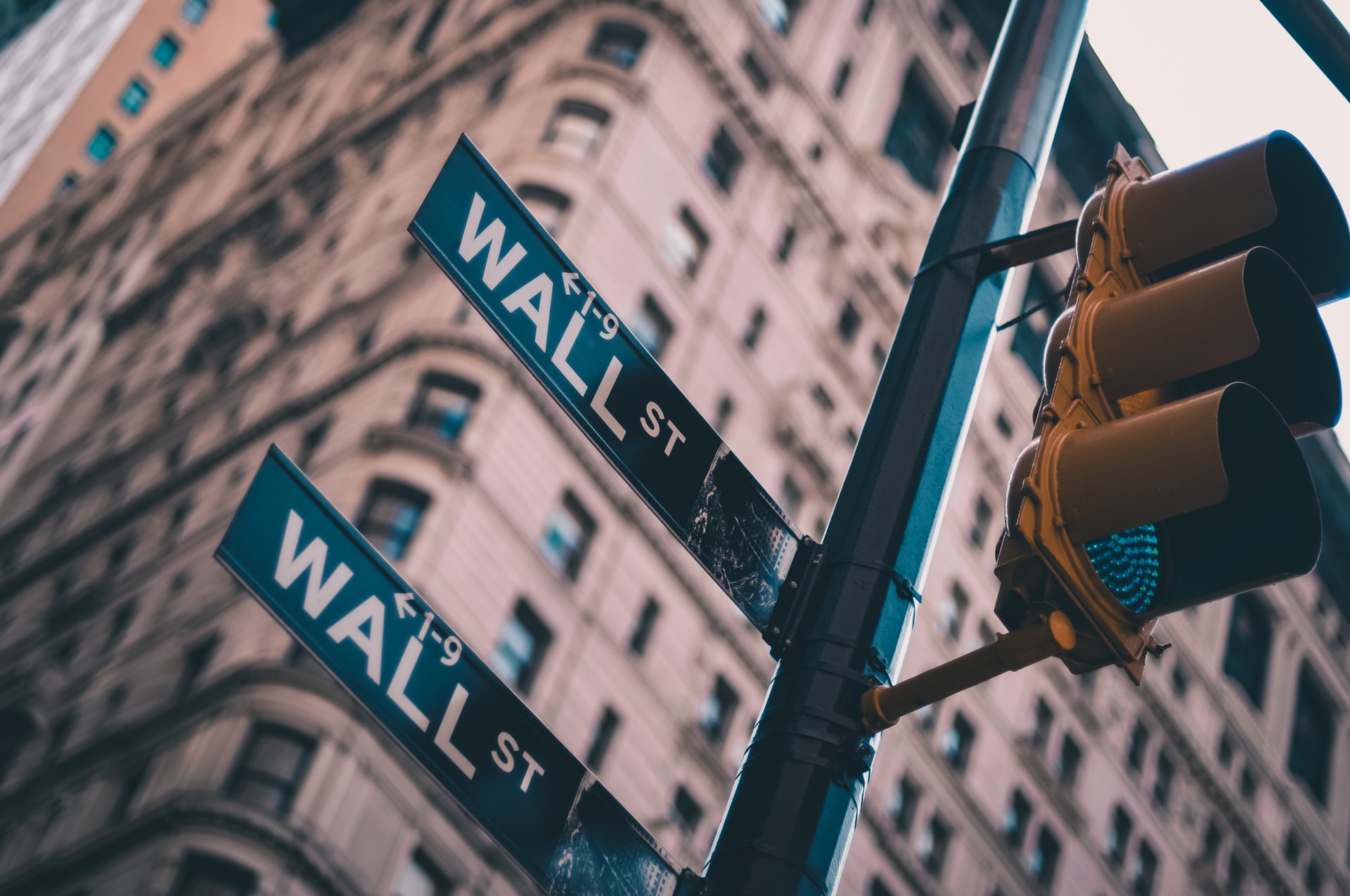
The agreement was an attempt to establish a set of rules after the 1792 financial credit crisis. During the crisis, there were no rules or trading safeguards, and a lot of trades were reneged on.
The panic had been instigated by the actions of the speculator William Duer, who borrowed heavily to make trades. He over-extended himself and was forced to liquidate his positions. A crisis ensued and Treasury Secretary Alexander Hamiliton was forced to bail out many banks and financial institutions in order to preserve the economy. It was the nation’s first bank bailout.
So the Buttonwood Agreement was a way to reestablish confidence in the financial system after the panic and encourage people to start investing again.
Fun fact: The first stock to begin trading under the buttonwood agreement at the New York Stock Exchange was none other than Bank of New York, a bank founded by Alexander Hamiliton.
By limiting access and closing the system to outside agents and auctioneers, the participants created a high trust environment where trades and payments would be honored, and investments were legitimate. To this day, finance is the only business in the world where you can make a multi-billion dollar transaction on a handshake.
Spoiler: The Buttonwood Agreement worked
The agreement worked, giving customers’ confidence in transacting business. This made the club membership enormously profitable. The profitability was a great incentive to follow the rules because in doing so, you would have access to a never-ending flow of capital and commissions.
The agreement itself was revolutionary in its simplicity and power made up of just two short sentences, covering two provisions:
- The brokers were to deal only with each other.
- Win or lose, they would charge clients commissions on their trades at a set rate of 0.25% per transaction.
Exact Text of the Buttonwood Agreement
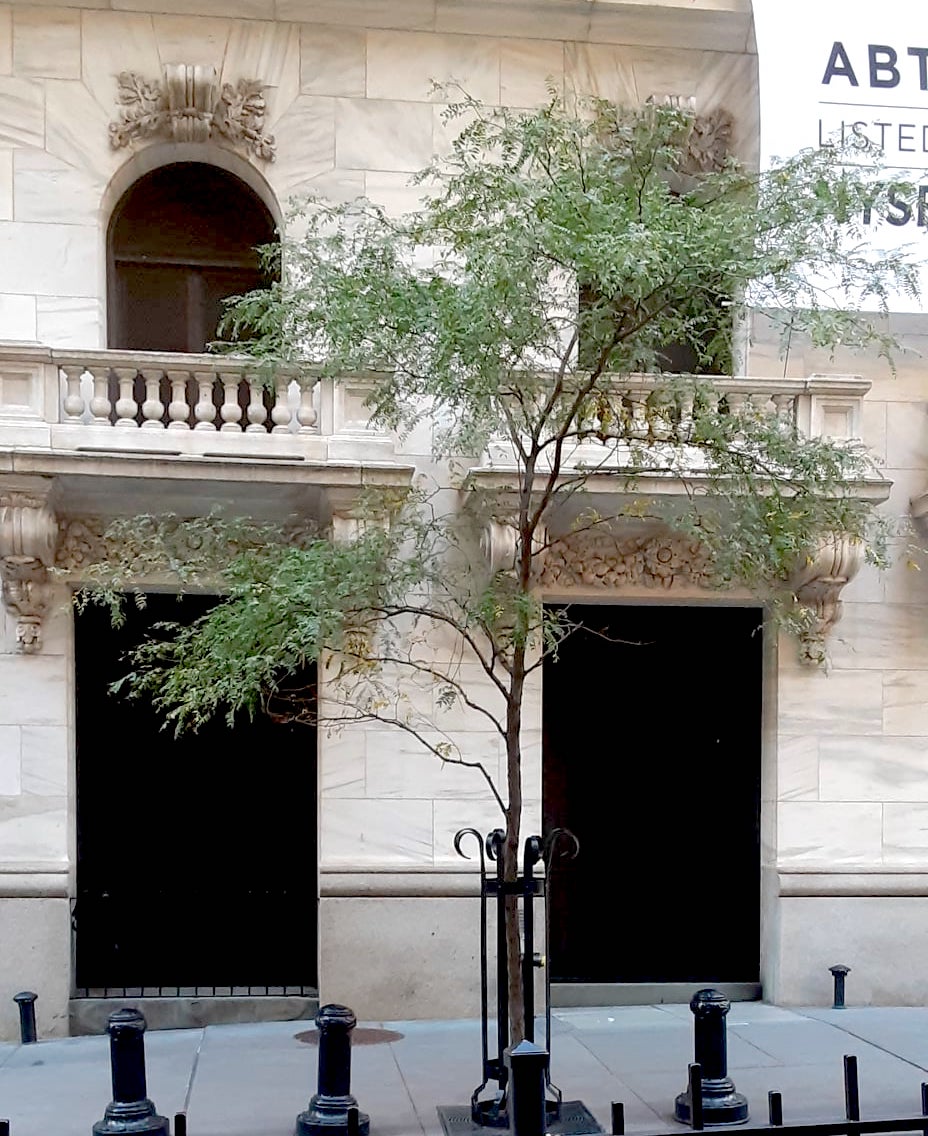
Here’s what the Buttonwood Agreement says, verbatim:
“We the Subscribers, Brokers for the Purchase and Sale of Public Stock, do hereby solemnly promise and pledge ourselves to each other, that we will not buy or sell from this day for any person whatsoever, any kind of Public Stock, at a less rate than one quarter percent Commission on the Specie value and that we will give a preference to each other in our Negotiations. In Testimony whereof we have set our hands this 17th day of May at New York, 1792.”
The Buttonwood Agreement also marked the beginning of what we now call “Wall Street” or the “Financial District.” Signers of the agreement posted their addresses alongside their names or the name of their firms, and they were all in New York’s fledgling Financial District.
- Leonard Bleecker: 16 Wall Street
- Hugh Smith: Tontine Coffee House
- Armstrong & Barnewall: 58 Broad Street
- Samuel March: 243 Queen Street
- Bernard Hart: 55 Broad Street
- Alexander Zuntz: 97 Broad Street
- Andrew D. Barclay: 136 Pearl Street
- Sutton & Hardy: 20 Wall Street
- Benjamin Seixas: 8 Hanover Square
- John Henry: 13 Duke Street
- John A. Hardenbrook: 24 Nassau Street
- Samuel Beebe: 21 Nassau Street
- Benjamin Winthrop: 2 Great Dock Street
- John Ferrers: 205 Water Street
- Ephraim Hart: 74 Broadway
How to visit Wall Street’s buttonwood tree today
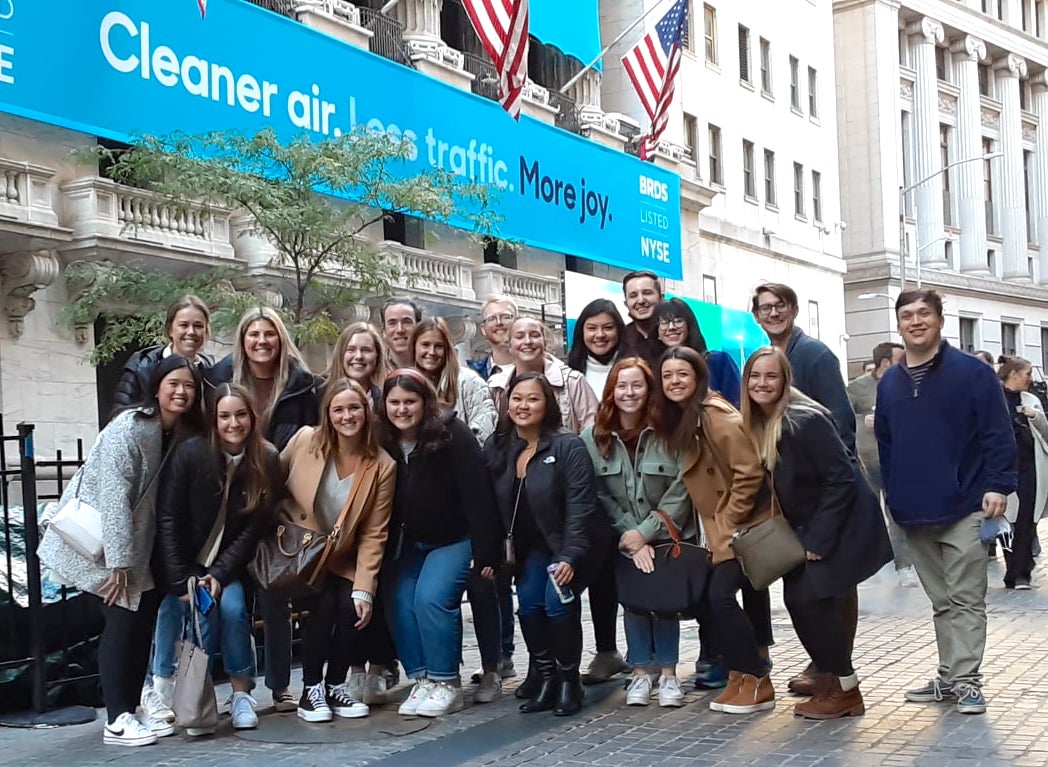
Visitors can easily snap a selfie in front of the buttonwood tree outside the New York Stock Exchange. It’s the only tree planted in front of a building on Broad Street. In fact, the corner of Broad Street and Wall Street has become a mecca for selfies.
Across Broad Street is both the famous “Fearless Girl” statue and the House of Morgan, former office of financier JP Morgan. On the other side of Wall Street is Federal Hall, which marks the location where George Washington was sworn in as the first president of the United States. The grand statue of Washington peers down at both Wall Streeters and visitors alike.
And of course, if you visit with one of our tours, we’ll definitely stop by the famous buttonwood tree!
Guide tip: A careful look at Wall Street cobblestones shows that running right down the center are post markers of what used to be a wall on Wall Street. It’s actually how Wall Street got its name.
More things to see around Wall Street
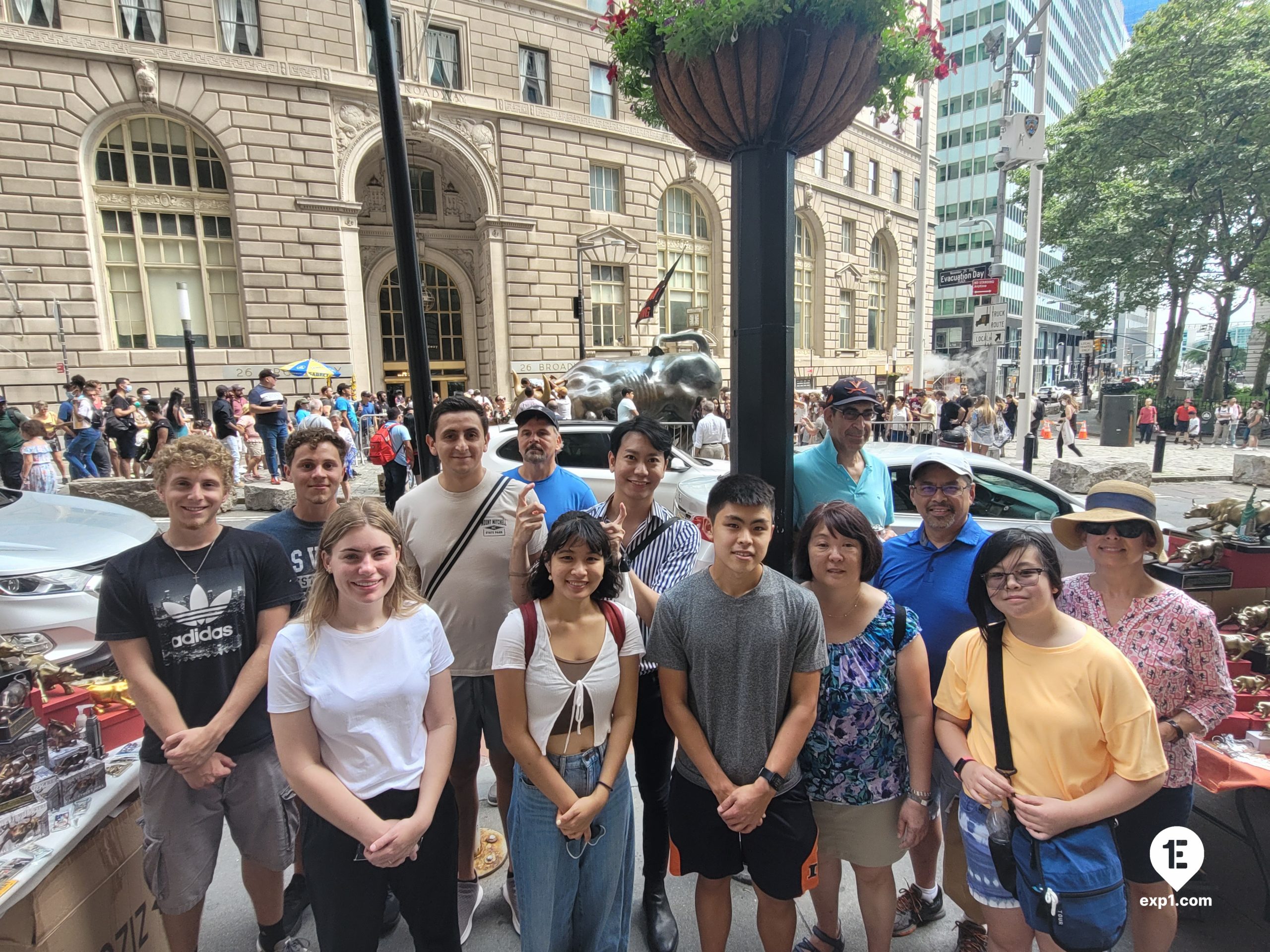
Wall Street Insider Tour guests pose for a pic near the Charging Bull.
Across the street on Wall Street is the sight of the first terrorist attack in New York City history. If you look closely, you can still see the shrapnel marks on the side of the Morgan building.
Within your line of sight is the clock tower of Trinity Church, just a short walk back to Broadway. Both Alexander Hamiliton and Robert Fulton are buried in Trinity Churchyard, and the movie “National Treasure,” starring Nicolas Cage, was filmed at Trinity Church.
In the other direction at 40 Wall Street is the Manhattan Bank Building, now known as the Trump Building. And just the next street corner over is the old New York Mercantile Exchange made famous in the movie “Trading Places” starring Dan Aykroyd and Eddie Murphy.
Don’t forget to get a photo with the famous Charging Bull!
So much more than a buttonwood tree
Of course, there’s a lot more to Wall Street than you’ll see at a glance. Just think how you would have walked by this sycamore tree without knowing how important a symbol it is for America and the global financial markets.
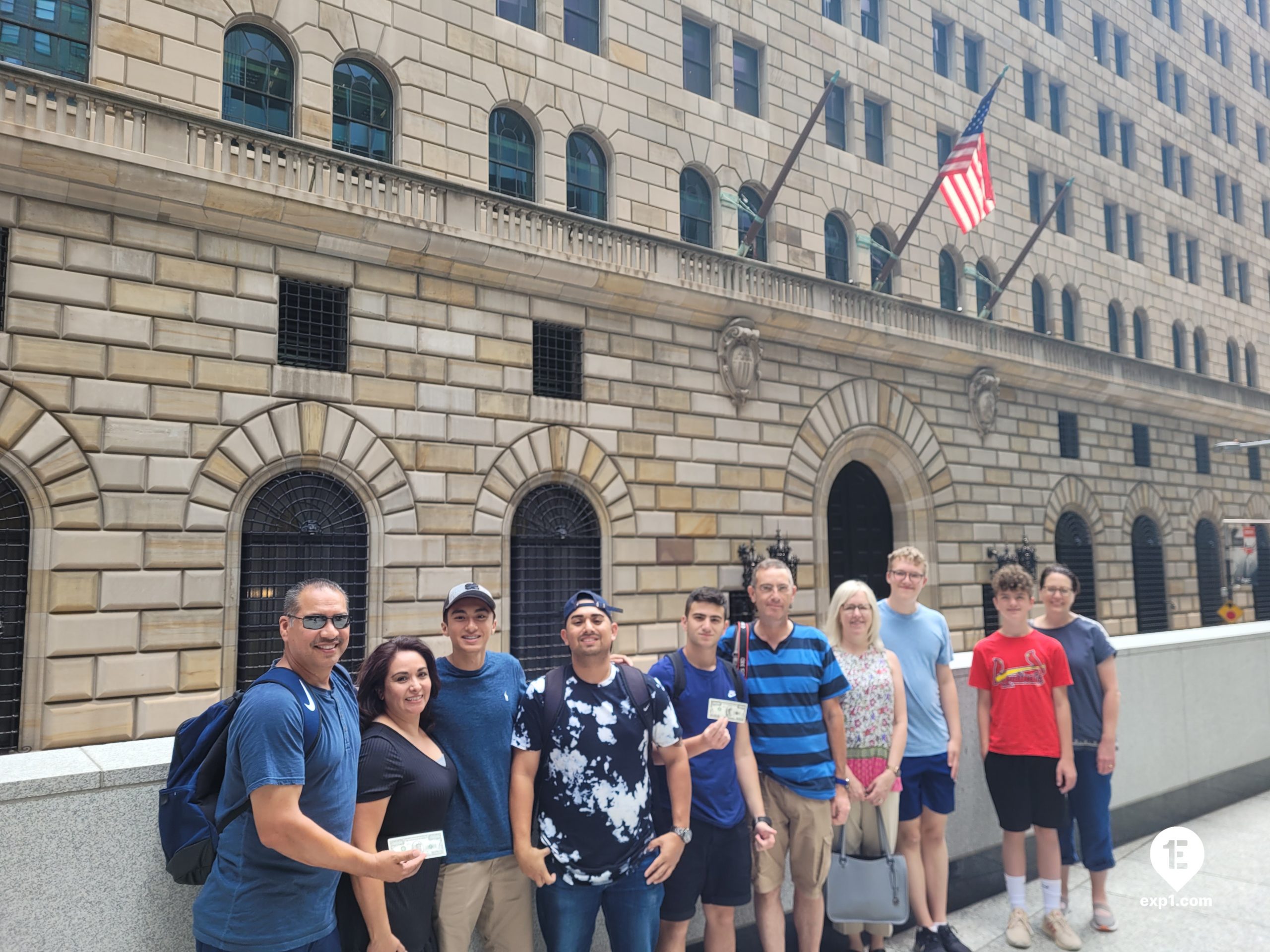
Wall Street Insider Tour group photo in front of the Federal Reserve
I recommend visiting with me (or one of our other Wall Street insiders) to get to know this incredible corner of downtown Manhattan. Our nationally acclaimed Financial Crisis Tour is perfect for those looking for an in-depth Wall Street experience.
